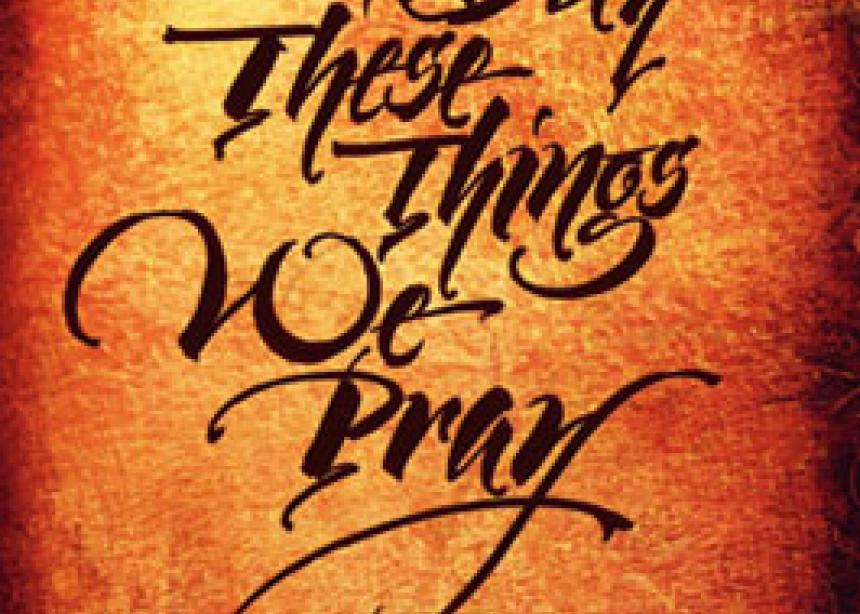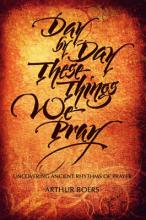When he was a young adult, Arthur Boers’ 17 year-old sister died of leukemia. Torn by grief, and unable to understand how God could allow such a terrible thing, he found himself unable to pray.
“At times I had nothing to say to God or did not know how to voice my prayers,” says Boers, author of the new Herald Press book, Day by Day These Things We Pray: Uncovering Ancient Rhythms of Prayer. “Sometimes I could think of things that I wanted to tell God, but was not sure whether they were legitimate or blasphemous. So I clamped my mouth and my mind shut when thoughts turned toward God.”
Then a friend introduced him to the practice of using a prayer book for daily prayers.
“I was comforted because that volume gave me words to pray,” he says. “It helped me voice laments and also encouraged me to put my situation into a wider context. Slowly I learned to pray again.”
Now Boers wants to help others who are struggling with prayer find ways to connect with God though the use of set prayers and prayer books.
“Daily prayer is the practice—or discipline—of praying every morning and evening, using a set of prayers being used by other Christians around the world,” Boers explains, noting that the practice goes back to the Old Testament, when Jews prayed two to three times a day. The early Christians also gathered daily to pray in the temple and in their homes, he says.
The early Anabaptists also used set prayers. The Schleitheim Confession, one of the earliest Anabaptist documents, refers to praying the Psalms regularly, and Dutch Anabaptists began making prayer books in the 17th century.
“The Anabaptists’ main devotional book was the Bible, but they also used stories of martyrs, along with hymns, sermons and devotional books to guide their devotional times,” says Boers.
Why don’t more Protestants use prayer books for daily prayer? Part of the blame can be laid on the Reformation, during which time the practice of daily prayer was associated with the old, corrupt church that was overthrown. As well, he says, “some Evangelicals and other Protestants don’t do it because it has been associated with Catholicism,” while other Christians believe that “extemporaneous prayers are more authentic than written prayers.”
Boers thinks that’s a shame.
“Written prayers can help you focus, direct your attention and expand your imagination for what you pray about and who you pray for,” he says. “It can challenge us to pray beyond our comfort zones—to pray for more than only ourselves, or our family and friends.”
Prayer books also help “when we find it hard to pray, or don’t feel like praying,” he adds. “When you don’t know what to say, the prayers help you verbalize the thoughts and ideas that might be hard to express.”
Setting aside time to pray also helps people regain balance in life, Boers suggests. “With all the busyness in our lives, it is easy to get off balance and forget our relationship with God,” he says. “By making a commitment to pray at certain times, we can keep our spiritual balance, and remind ourselves that God is central to our daily activity.”
His goal for Day By Day These Things We Pray is to help Christians “uncover the practice of daily morning and evening prayer. . . . My hope is that readers will join me in exploring what happened to such prayer, and then see its potential for renewing our spiritual lives, and enriching the life of the wider church.”
Arthur Boers holds the R. J. Bernardo Family Chair of Leadership at Tyndale Seminary, Toronto, Ont. He previously taught pastoral theology at Associated Mennonite Biblical Seminary, Elkhart, Ind. He has written or co-written six books, including in Take Our Moments and Our Days, Vols. 1 and 2 (see below).



Add new comment
Canadian Mennonite invites comments and encourages constructive discussion about our content. Actual full names (first and last) are required. Comments are moderated and may be edited. They will not appear online until approved and will be posted during business hours. Some comments may be reproduced in print.